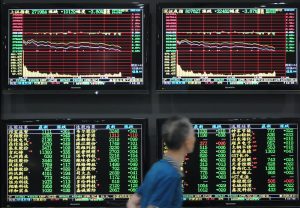(ATF) The ATF indices closed mixed on Friday: the benchmark China bond 50 index and ATF ALLINDEX ENTERPRISE slipped 0.06% and 0.04% respectively, while the ATF ALLINDEX Corporates, Financial and Local Governments gauges stayed flat.
China will be setting on Monday its benchmark lending rate for July, the Loan Prime Rate (LPR), which is expected to stay unchanged following the People’s Bank of China (PBoC) decision not to lower the rate on its medium term lending facility (MLF) on July 15. The one-year LPR is currently at 3.85%, while the five-year rate stands at 4.65%.
The LPR is set by a panel of 18 commercial banks who submit their quotes to the National Interbank Funding Centre, an average of which then serves as the pricing reference for bank lending. It is linked to rates set during open-market operations, specifically the MLF.
“If the PBoC was looking to push down the LPR, it would have cut the MLF rate this week, which is what it did ahead of past LPR reductions,” said Julian Evans-Pritchard, Senior China Economist at Capital Economics. “Moreover, the central bank has also allowed liquidity conditions to tighten in recent weeks, so it is not showing much sign of wanting to push down bank lending rates any further at the moment.”
Monetary easing measures, which helped China to post 3.2% in Q2 GDP growth on Thursday, are now largely over, and to be replaced with a much greater emphasis on fiscal stimulus, he said.
READ MORE: China regulators, courts hit more for illegal bond dealings
“In China, unlike in Western economies, fiscal policy is largely investment-driven but given the difficulties in building infrastructure projects when the economy is shut down, monetary policy did a lot of the heavy lifting in Q1,” he said. “However, that’s shifting now.”
China’s 10-year government bond yields have risen dramatically since April, as a result of a wall of government bond issuance and tight liquidity concerns, as reported. However, these liquidity concerns appear to be overplayed.
The Wenzou private lending comprehensive interest rate index, a leading indicator of credit condition stresses in the banking sector, currently stands at around 14%-15%, according to Jinny Yan, Chief China Economist at ICBC Standard Bank in London. “Private sector lending rates escalated to 20% during the financial crisis. When we see the rate coming down, it means that credit is abundantly available in the banking sector,” she said
The concern going forward is how the economy will fare when China policy makers start to withdraw support, moving away from ensuring adequate liquidity and re-imposing credit risk. Recent statements indicate that worries now centre on how to manage the after-effects of stimulus measures in terms of higher debt levels and bank balance sheets.
“For now, my impression is that liquidity is flush but that situation is probably not going to last. As the economy continues to recover, policymakers will want to take a step back and that will expose a lot of the risks that are still in the system,” said Evans-Pritchard.
























